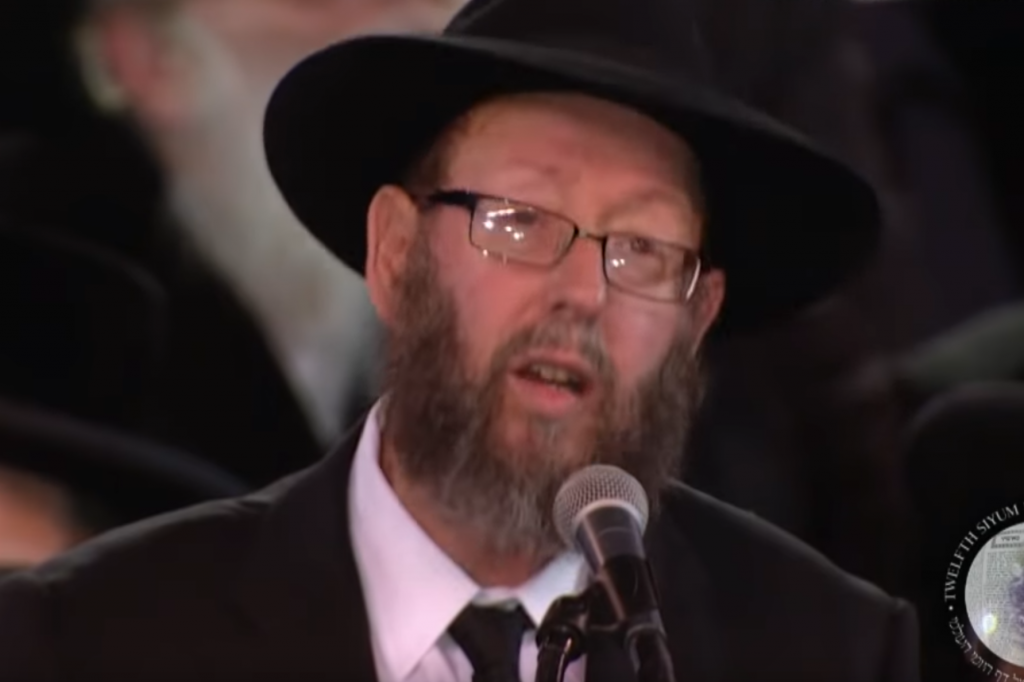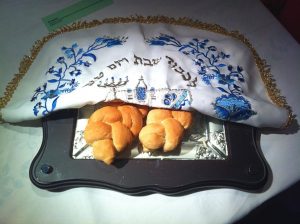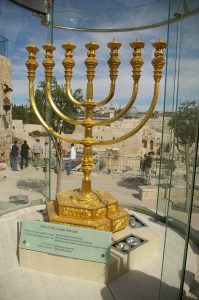 I was looking up the Transcript of the speech of Rabbi Yissochar Frand – Rosh Yeshiva of Ner Yisrael Yeshiva in Baltimore – he made During the 12th Siyum HaShas at MetLife Stadium in 2012. I didn’t find it. Here is one I tried to put together:
I was looking up the Transcript of the speech of Rabbi Yissochar Frand – Rosh Yeshiva of Ner Yisrael Yeshiva in Baltimore – he made During the 12th Siyum HaShas at MetLife Stadium in 2012. I didn’t find it. Here is one I tried to put together:
Birshus Rabbanan verabosai. The DAF – it’s become so common an expression that it is no longer the DAF Yomi but merely the DAF. It’s become a proper noun. It’s part of our daily manner you’re speaking. Expressions like did you do the DAF, where’s the DAF holding are part of our lexicon. But according to Mayor Shapiro, it’s so much more than a mere figure of speech.
The Gemara in, Yevomos, relates how Raban Gamliel once saw a ship sink with Rebbi Akiva aboard. He was sure that he had drowned. Rabi Akiva miraculously appeared before him. Raban Gamaliel asked him, How were you saved? Amar Li Daf Shel Sefina Nizdamen Li. The simple translation of that is that Rabi Akiva was saved by holding on to a plank [Daf] of the ship, a daf. But the word daf in the word daf. Mayor Shapiro saw clear metaphor. It’s the daf that saves so many of us from drowning as well. Maybe not in the turbulence of the sea. But the turbulence that sometimes is our lives.
Put succinctly via the haunting pasuk nigun that we know the haunting pasuk that we know, from that haunting Nigun Lulay Sorascha Shaashuai azavadi beoni. If not for your Torah that was my delight, I would have been lost in my pain. And this is what Rav Mayer Shapiro try to convey. That it is Limud HaTorah, Bichlal. And the Daf Yomy befrat that is our life preserver. It’s the life line that we all need.
And that’s very expression “lifeline” – someone wrote to me to describe his relationship with Daf Yomi. Suffice it to say that this person had had a difficult life. He was a Yasom [orphan] at an early age, she had very little money. He had several medical medical issues, and he did have an easy time socially. And here here’s what he wrote me after the last Siyum HaShas [completion of the Talmud] seven and a half years ago. I have been out of yeshiva for two years, and I had barely learned a word. I was not all that happy with myself. I would come home at night and stare at my 19 inch color companion. And I realized that this had to stop. So I tried Daf Yomi. As I sat in Madison Square Garden last Tuesday night, I was on the ail tail end of a roller coaster ride. I had not had the greatest muscle socially, job wise, city wise, and the list goes on. But what I did have was a lifeline. A constant companion on the train at the doctor’s office late at night, early in the morning a trusted companion who would never let me down even if everything else and everybody else would. All this companion asked for me is that I visit it every day for an hour or so. So I can hear what he has to say.
It’s the same message that the Gerer Reber once told it’s a tzebrachen Yid, a broken Jew who had recently lost his wife, and was very, very lonely and he cried to the Reber from the depths of his solitude. The rebbe told him Ov Yid the hot a blatt Gemara. Is a Kanmal nishta lane. If a Jew has a blatt Gomorrah, he’s never alone. Which one of us wouldn’t want such a companion?
Limud HaTorah is so much more than just another mitzvah. It is life itself. Those words “Ki Hem Hainu veOrech Yamainu” are to be taken literally which helps us explain the famous Gemara in Masechta Yuma that Hillel hazaken used to spend half of his daily wages to gain entry into the Beis Hamedrash, and one day when he couldn’t find work and had no money, he went up to the roof in the dead of winter, and listened from the skylight. Aloי venitlah veyashav al pee I Aruba kedai Sheyishma divrei Elokim Haim Mipi Shemaya veavtalion [Yoma 35b] the Hofets Haim asks, that this Gomorrah seems to contradict the well known Halakha that one should not spend more than 20% of his assets in the performance of a mitzvah. Why then did Hillel seemingly violate this halacha by spending 50% of his meager wages in the performance of a mitzvah?
I once heard the Chofets Haim himself in Likutei Halakhas alludes to this, and that is because the Gomorrah uses an expression that the Gomorrah rarely used. Matter of fact, it’s the only time in all of Shas Bavli that the Gomorrah uses this expression to describe a Shiur. And that is “kedai Sheyishma divrei Elokim Haim Mipi Shemaiah veAvtalion.” This wasn’t just a shiur. This wasn’t just another mitzvah to Hillel. This was divrei Elokim haim. This was life itself. And for life itself. There are no spending limits. To Hillel. This was his lifeline. And when he couldn’t afford it, he listened from the skylight he Hillel truly believed in those words, Ki hem Hayeynu veOrekh Yamenu.
And in some level, we all feel like this, perhaps not consciously, but somewhere in the recesses of our souls. We know this to be true.
Rabbi Aaron Paperman was a chaplain during World War Two and after the war was over, he would visit DP camps to provide for the needs of the Holocaust survivors. And he’d ask each of the survivors Vas daf dir. What do you need? And the answer would invariably come back “Ich daf a porshich”. I need a pair of shoes. Ich daf a poor Hoisan. I need a pair of pants. However, there was one Yid, his name was Mr. Seeger. He was a bobover Hasid. He had a strange request Rabbi paperman asked him “Vas Daf dir?” What do you need? His response was “ich DAF a Baba Kama”
Rabbi Paperman said to him, Y’a, y’a ober “Vas Daf dir?” What do you really need? And again, the same response ich DAF a baba Kama – until Rabbi Paperman finally realized that that is what he really wanted. And it was successful and getting him a gemara Baba Kama that he Yid knew with his entire being that besides for clothes and shelter, and food and water, every Yid needs something else he needs a Baba Kama. Ki Hem Hayeinu Ve Orech Yameinu.
And there’s another factor that motivates people to learn the DAF Yomi even in our day and age, when our Mayer Shapiro started this magnificent program. It had a natural attraction. A Jew in Europe, who toured it toiled a menial job during the day, saw learning at night as an escape from a difficult reality. This was his hour of enjoyment. This was his relaxation, a respite from a life that was full of privation. But today, there are so many distractions, so much to occupied one’s time, so much out there that dazzles the eye on the imagination. And yet, people will rise at 5am or begin at 11pm. To do what? to study a text written more than 1500 years ago, in a difficult language, which is intellectually challenging, with many arcane subjects. And this has to compete with other pursuits that seems so much more alluring. They will do this in planes In some trains and in buses, they will do this during Hasanus this waiting for the Huppa they will do this in doctor offices and in Supermarket checkout lines, they and their wives and their family and their children will bend their schedules to make this happen. Why? How do we explain the inexplicable? Perhaps it’s because people realize that Torah is real, and everything else, no matter how dazzling is just fake.
The Pasuk / passage describes mattan Torah as the Ribono Shel Olam speaking to Klal Israel Kol GadDol velO yasaf a mighty voice Velo yosaf. Rashi says that the words Velo yasaf means that the voice never stopped. But where is that voice? Have you heard it? My good friend Rabbi Jakob luban told me that he heard from his rebe rebe Elya Svae, who heard from his Rebe, Reb Ahron Kotler that that voice is the voice of the rebono Shel Olam talking to the man through the Torah and when one Yid learns Torah He still hears the reverberation of the Rebono Shel Olam. Speaking to man, that is the power of Limud HaTorah – that is how the DAF competes and the DAF Trumps.
because it is the real thing, and everything else is just fake. It is the power of the authenticity of Torah and we’re hearing another voice today.
The MedDRAsh says on Reb Yehoshua ben Levi Bekhol yom veYom bas kol, yotzat mehar horev ve omeret oy lahem la beriot me’elbona shel Torah that every day, a heavenly voice bemoans the fact that Yidden not learning enough. Well. Have you ever heard that Bas Kol? If you’re like most people, you will answer No, I haven’t. But in truth, we’ve all heard that bas koll all be it faintly the Baal Shem Tov was said that that Bas Kol is the herehurei Teschuva the thoughts of Techuva that we have from time to time, when we think I really should be learning more, or unreasonably wasting my time with this. That is that Bas Kol. But sometimes it’s too fleeting. It’s too faint. And we squelch it. And we quash it and we ignore it. But today, sitting here among 90,000 people we do hear that Bas Kol – it’s the clarion call that emanates from the stadium that shouts “learn more.”
We can’t say we don’t hear it. We hear it loud and clear. And today we cannot squelch it.
Today we must respond. And today we must leave here with a plan.
if you’ve never learned that DAF Yomi then tomorrow is the day to start. If this is your second or third time finishing shas that you ask yourself must ask yourself how am I going to do better next time around? Maybe go to a shear Iyun once a week on the Sugya of the DAF maybe learn the daf in the morning and go to shiur hazara At night. maybe be so bold as to take tests on the Daf. And if you can’t learn then a Daf a day then make it an Amud day are a daf of Mishna Berura a day or a mishna a day but something a day
But we must respond to that bas kol that we can no longer ignore and leave here with a plan. And that was the message there of Nosson Tzvi shared with the Yid named Reb Nochom Stillerman, Mr. Stillerman after retiring moved to Eretz Yisrael in honor of his 70th birthday, he finished Masechta Shabbos an accomplishment he proudly shared with Nosson Tzvi Finckel. Rav Nosson Tzvi congratulated him but told him that that’s not enough, go back and figure out a plan how you could finish Shas. He came back with a printout and figured out that by learning 10 hours a day, it would take him 23 years to finish Shas. Rav Nosson Tzvi’s reaction was “now that’s a plan.”
Mr. Stillerman, however, had a different reaction. I’ll be 93 by the time I finish, how can I undertake a plan that I cannot possibly finish? Rav Nosson Tsvi Finkel – by then afflicted with debilitating Parkinson’s disease for more than 28 years, struggled mightily from his seat. And while shaking, he reached under the table cloth and pulled out more of his plans for the expansion of the Mirrer, Yeshiva. And he turned to Mr. Stillerman. And he asked Him “and do you think I can do what I’m doing? Look at me!”
But he had a plan. And that’s what he demanded from Mr. Stillerman – a plan. And that’s what’s demanded from us today. A plan and if it’s sometimes B, B seems beyond our koachos [power]. All we have to do is picture in our mind’s eye Rav Nosson Tsvi Finkel. Mr. Stillman once had another conversation with Rav Nosson Tsvi. Years earlier of Nosson Tzvi had commented to Mr. Sillerman incredulously that maybe his Parkinson’s disease was an onesh a punishment for not learning Torah Lishma.
Mr. Sillerman sometimes sometime later offered a different approach as to why the Rosh Yeshiva had to suffer based on Yerushalmi Masechta Horayos, Yerushalmi says in Masechta Horious. That would Moshe Rabbeinu learned Torah on Har Sinai, from the Rebona Shell Olam, he would forget immediately what he learned until at the end the Rebona Shell Olam gave him the entire Torah as a gift. But why did Moshe have to suffer and endure this frustrating experience of learning and forgetting and learning and forgetting and learning and forgetting? Says the Yerushalmi – Koll Kokh lama? la haChzir es hatipshim, so that people who forget their learning won’t give up and say, what’s the use? It’s an exercise in futility. I forget anyway. MoShe Rabeinu provides the counterargument Mr. Stillerman suggested that maybe the Rosh Yeshiva had to suffer from his illness to provide living proof that one can learn even if it’s difficult, like. Like the man I heard about two nights ago, who was member of A daf yomi me in Brooklyn, but in the middle of the cycle, became blind. But he would go to the DAF every day in spite of his blindness. He was the first to come and the last to leave to learn real Torah She Be’al Peh.
Rav Nosson Tsvi leaned over and kissed Mr. Stillerman and quoting the Gomorrah in Masechta Maccos. He told him Akiva Nikhamtanu. Akiva Nikhamtanu. You have comforted me. In our generation, we had a Rav Nosson Tsvi Finkel, an American born boy, raised in Chicago, Illinois. A graduate of every crown day school who became a gadol beyIsrael. Most of us will never become a Rav Nosson Tsvi Finkle. But he taught us all something. Even if we never stepped here in the Mirrer Yeshiva. He taught us never to give up. He taught us not to say this is too hard. He taught us to always have a plan. He taught us to aim higher. He taught us to reach beyond. And he taught us that beyond your reach is really within your grasp.
==
SUMMARY KEYWORDS daf hayomi , torah learning , stillerman , daf yomi , torah , life , finkel , gemara , hillel , rav , people , bas kol , shiur , mitzvah , shapiro , plan , daf , lifeline ,

 The commonly accepted translation of the Hebrew words Yetziat Mitzrayim – is ‘The Exiting from Egypt’. But let’s analyze a bit. Yetziah means ‘going out’. To make it ‘the going out of‘ we replace the letter Hei with a Tav. It thus becomes ‘The Going out of’ Mitzrayim means Egypt. The Going out of Egypt. Thus it could mean people are going out of Egypt or Egypt is going out of people.
The commonly accepted translation of the Hebrew words Yetziat Mitzrayim – is ‘The Exiting from Egypt’. But let’s analyze a bit. Yetziah means ‘going out’. To make it ‘the going out of‘ we replace the letter Hei with a Tav. It thus becomes ‘The Going out of’ Mitzrayim means Egypt. The Going out of Egypt. Thus it could mean people are going out of Egypt or Egypt is going out of people. The Vilna Gaon – the Genius of Vilna / Rabbi Elijah ben Solomon Zalman, an 18th-century rabbinic sage – said that the Jewish people need to wear Shabbat clothes when the Messiah is about to arrive.
The Vilna Gaon – the Genius of Vilna / Rabbi Elijah ben Solomon Zalman, an 18th-century rabbinic sage – said that the Jewish people need to wear Shabbat clothes when the Messiah is about to arrive. I spy. Intentionally? Sometimes. People speak. Distraction draws my attention.
I spy. Intentionally? Sometimes. People speak. Distraction draws my attention. King Antiochus was notorious for conquering countries with a strong hand. When conquering Israel – his objective was not just physical subjugation – but mental subjugation. His war wasn’t just a war against nations – but a war against spirituality. Spirituality is basically connecting with the Creator of the Universe – Hash-m.
King Antiochus was notorious for conquering countries with a strong hand. When conquering Israel – his objective was not just physical subjugation – but mental subjugation. His war wasn’t just a war against nations – but a war against spirituality. Spirituality is basically connecting with the Creator of the Universe – Hash-m. Esav / Esau – in this week’s parasha / weekly Torah reading –
Esav / Esau – in this week’s parasha / weekly Torah reading –  Everything is in the Torah
Everything is in the Torah I remember “Back to School” days. I was so excited. I had fresh new notebooks, new pens and pencils in a tidy pencil case. Everything was spiffy and new. I had new clothes for the new school year. I was eager to meet my new classmates and talk with my old friends.
I remember “Back to School” days. I was so excited. I had fresh new notebooks, new pens and pencils in a tidy pencil case. Everything was spiffy and new. I had new clothes for the new school year. I was eager to meet my new classmates and talk with my old friends. Last week we read the first Parasha / Torah Reading of Bereshit / Genesis. Speaking of the creation of Man it says “You will rule over the fish of the sea and the birds of the sky and all living creatures.”
Last week we read the first Parasha / Torah Reading of Bereshit / Genesis. Speaking of the creation of Man it says “You will rule over the fish of the sea and the birds of the sky and all living creatures.”  A friend came up to me on Shabbat. “I am really upset – This person treated me like a bum. My aide and I were sitting quietly and he told me that we don’t sit here like a bum.”
A friend came up to me on Shabbat. “I am really upset – This person treated me like a bum. My aide and I were sitting quietly and he told me that we don’t sit here like a bum.”